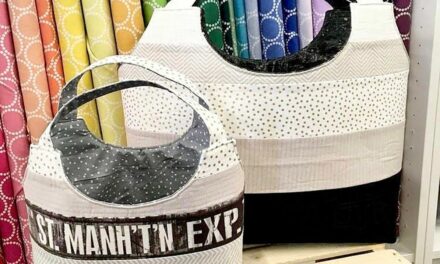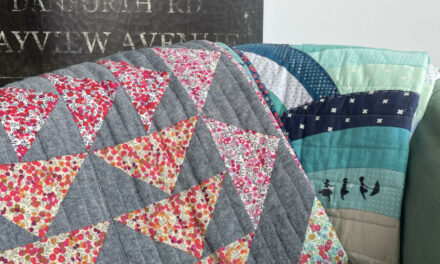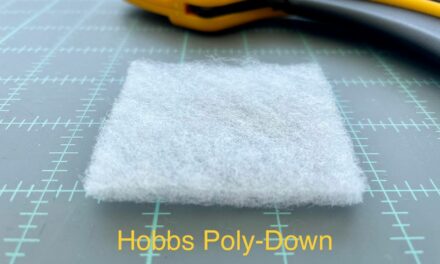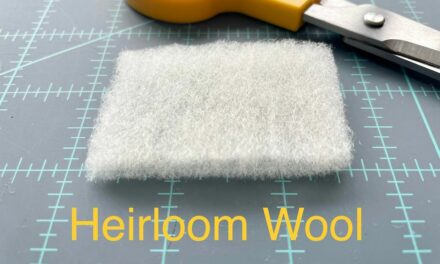What is Decor Bond used for?
Decor bond is a type of interfacing used for all sorts of small projects, including home decor, hat brims, fabric buckets, and other small crafting projects. It’s made from 100% polyester and it is 45″ wide. It’s classified as a firm non-woven and it has a somewhat papery feel to it.
Decor Bond is my favourite in-betweener. It’s heavier than Pellon SF101, which means it’s a great fit if you want a better level of crispness and interfacing that holds its shape better.
It’s not as thick and heavy as Peltex though, so it’s still easy to turn after sewing.
It’s made of 100% polyester and is 45” wide. I love that extra width so I don’t have to cobble together pieces for bigger or oddly shaped projects.
Decor bond is one of the main interfacings for the Range Backpack I made below!
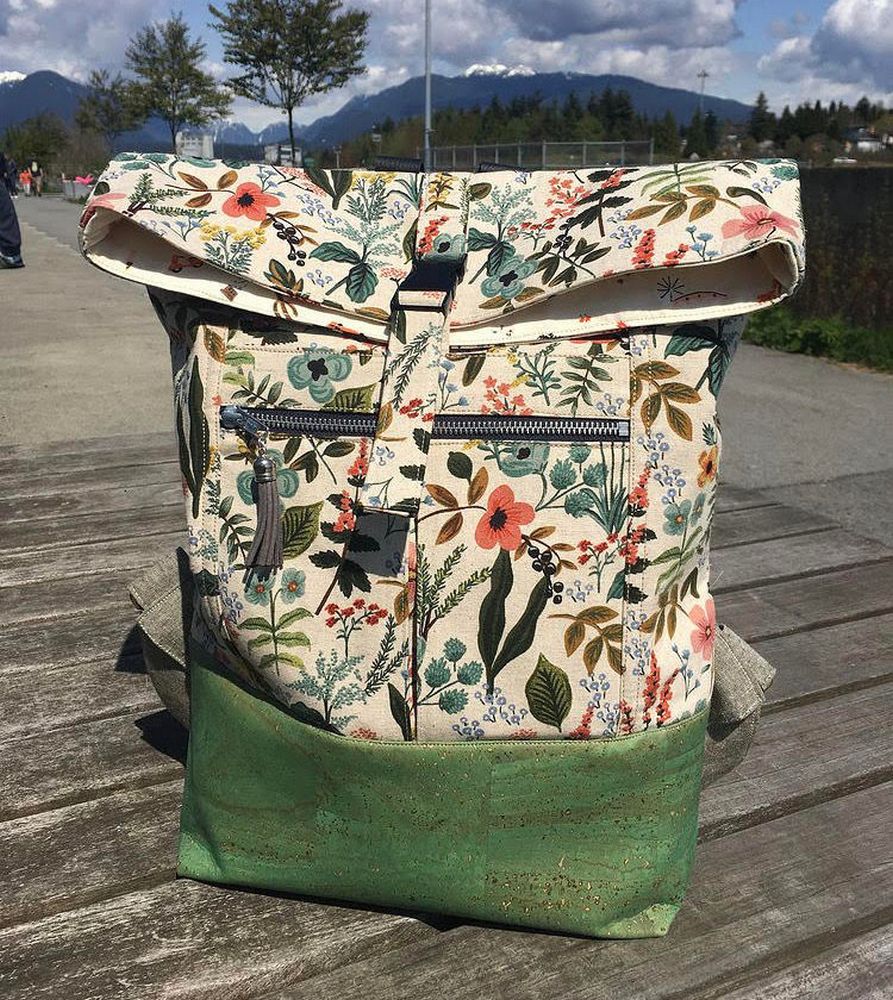
Decor Bond comes as a one sided fusible and the glue side is a bit trickier to discern on this interfacing. It doesn’t have the usual scratchy raised dots. It’s more of a shiny side that has the glue, and the matte softer side is without fusible. I find it takes some extra time under the iron to get the glue to fuse. (See our tips below on how to get it to fuse well!)
Be patient with it, it’s because the glue is so fine. You need to check your edges to make sure it’s fused properly.
What should Decor Bond NOT be used for?
Decor Bond should be avoided when making T-shirt quilts or any sort of clothing. It’s too stiff for garments and quilts – it’s too structured and won’t give you a nice drape. It’s also a non-woven, which means that too many washings will break it down in time.
For T-shirt quilts, you’ll want to use Pellon SF101 (Learn more here) and for clothing you’ll want to use Pellon 911FF
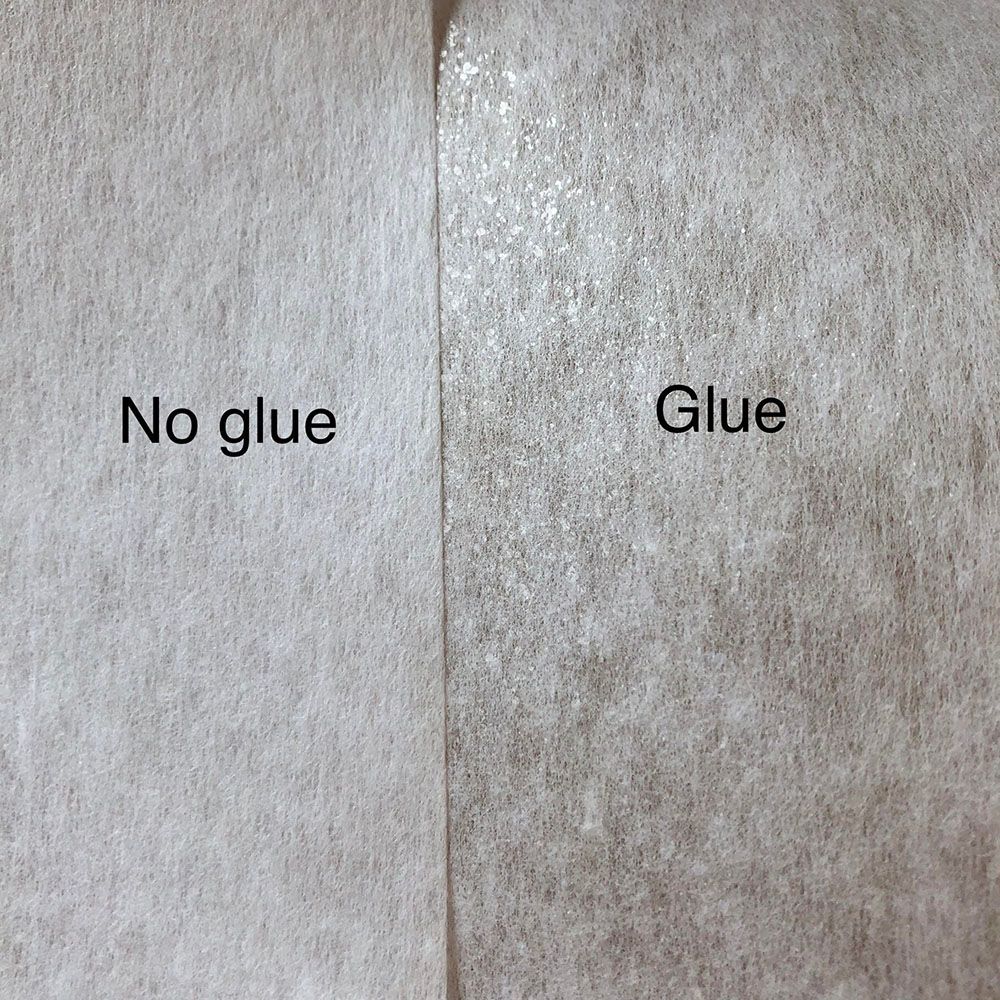
The picture above shows a piece of Decor Bond up close. Do you see the slight sheen on the glue side? You can see it more clearly in person, as it catches the light when you move it around a bit.
Tips for working with Decor Bond
1. Press again after turning.
With Decor Bond you will want to press again after turning. Turning your project will crease and wrinkle the interfacing, so it’s best to freshen it back up once you’ve turned your project.
2. Use 2 layers for better support.
You can use 2 layers for extra rigidity if you like! Either one on top of the other or fused to your lining as well as your outer fabrics.
3. Give it a wash.
You can wash Decor Bond after you’ve made your project. Be sure to use warm water, and give it a tumble dry on the low temperature setting on your dryer.
3. Iron it.
Leave your iron in place and count to 10 to fuse correctly with steam as advised. You could also use a damp pressing cloth.
What things can you make with Decor Bond?
- Hat brims
- Fabric buckets
- Eyeglass cases
- Home decor, such as placemats, coasters, flower embellishments, wall hangings & more.
- Crafting projects, such as patchwork book covers, quilted totes & more.
The fabric bucket I made in the picture below was made using one layer of Decor Bond which was fused to the outer fabric.

I hope you’ll add Decor Bond to your stash because I think it’s a great one to have on hand in your sewing room!
The nice thing about interfacing is that it’s nice and flat so it doesn’t take up much space in the cupboard. More room for pretty fabric, right? 🙂
Happy stitching!

ABOUT THE AUTHOR
Michelle Brassens


